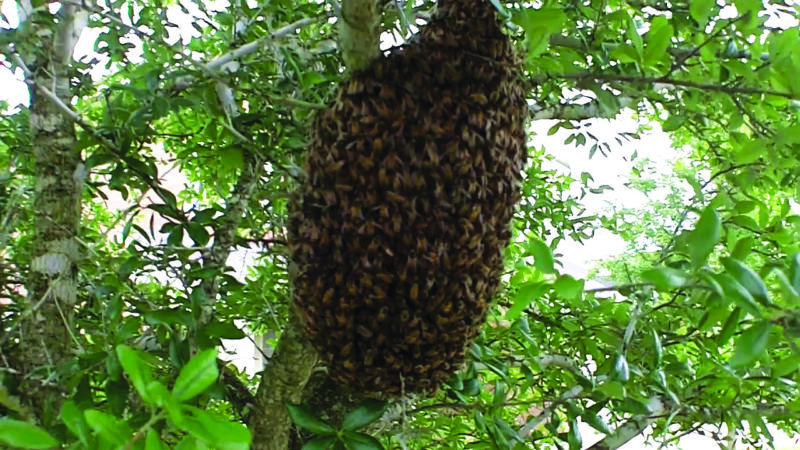While many people look forward to spring as a period of new possibilities and beautiful flowers, humans aren’t the only species that likes to take advantage of the warmer weather. Springtime also signals when pest activity begins to skyrocket.
“As soon as we hit nighttime temperatures of 77 degrees, that’s the best time for insects and other pests,” said Cardon Ellis, who has worked in pest control since 2006 and co-owns the company Unipest.
“The types of pest you’ll encounter in Santa Clarita really depend on where you are, because it’s really diverse in elevation and ecology. For example, in Castaic and Stevenson Ranch, it’s much hotter and more arid, and I’ll get a lot more scorpion and tarantula calls, whereas Valencia has a lot more moisture, and is lower in elevation, so there are tons of rats.”
Rattlesnakes, gophers, black widows, ants, ground termites and Africanized bees are other common pests that Ellis has encountered throughout Santa Clarita.
The consistent and prolonged warm weather in Santa Clarita also results in a longer period of activity for pests than other areas with a more varied climate. Unfortunately for Santa Claritans, many homes in this area were built with lighter wood and other building materials that were not made with the possibility of pest infestations in mind.

Courtesy photoAmong the calls received by local pest control companies are those for the removal of feral beehives.
A majority of the calls Ellis gets are for ants, spiders, termites, bed bugs and feral beehives.
Pesticide restrictions
One of the biggest barriers to effective pest control is the restrictions and regulations of pesticides and the negative public perception.
According to Ellis, the city used to control the rat problem in Valencia by placing cans of rodent pesticides along the paseos, which was highly effective, but new regulations and high costs forced that program to stop.
While herbicides and fungicides are typically very harsh and only used in extreme scenarios, Ellis said that most insecticides are very effective and mild enough for a human to drink without adverse effects.
There is a growing trend in homeowners to look for organic and natural options to control pests, though these are largely ineffective and need to be reapplied every two to three days.
“People often think exterminators are meatheads who don’t like spiders, but there’s a whole science to pesticides and maintaining the balance of the ecosystem,” he said. “Sometimes, Santa Clarita residents misstep and want these treatments or won’t want me to kill the rats because they want to be ‘natural,’ but even having a lawn or fruit tree and an eco-friendly drip system is going to artificially affect populations. We artificially boom these populations so we also have to artificially reduce them.“
Most of the time, Ellis said, one of the biggest reasons that pests will gain access to houses is due to shortcuts taken when doing housework. For example, when cable installers drill holes to run cables through in the attics of houses, they leave the holes open, allowing open access for pests to get inside houses.
“It’s something where a 50-cent part could have prevented 40 rats from nesting and creating a $5,000 job,” Ellis said. “It’s sad to see things that could have been fixed five years ago with little effort become a big problem because these companies cut corners and are lazy.”
Ellis also noted that over-watering lawns and gardens creates a haven for pests that normally would not have access to a significant water source. The excess water encourages these pests to stay close to homes and allows them to create more offspring.
“It’s like how you see teenagers are always drawn to an In-N-Out,” Ellis said. “They congregate there because it smells good. If you take away all the good food and drinks and smells, then there’s not as much reason for the pests to be near your house.”
The best ways for Santa Claritans to reduce the risk of pest infestation, according to Ellis, are to reduce the amount of water that their lawn systems put out, inspect their houses after any work is done and cover up any holes or entry points that could provide access for animals, and to not be afraid of chemical pesticides should extermination work be required.











